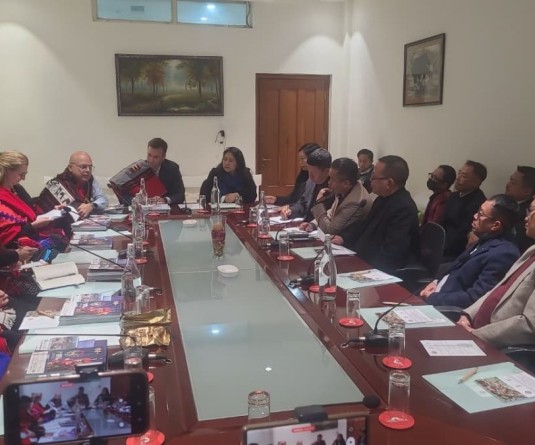
Y Merina Chishi
Morung Express News
Dimapur | October 31
Some years ago, Sema Tilla Government Middle School in Dimapur resembled all other government schools in Nagaland- shabby, overcrowded classrooms and missing teachers. With no funds and bad administration, the school was in a mess. Five years down the line, the school is today an ideal example of government- community partnership and a success story of ‘communitisation’ in Nagaland.
Community participation in promoting education is seen as a powerful tool by many governments worldwide. Many countries are now encouraging community participation in education and there have been several successful outcomes especially in the under- developed and developing countries.
The Government of Nagaland enacted the ‘Nagaland Communitisation of Public Institutions and Services Act’ in 2002 to cover water, power supply and education sectors. The Act empowers community to own, manage and control these sectors as their own vesting in them legal powers and responsibilities. In the education sector, the programme seeks to develop institutions of excellence with active participation of the community.
Accordingly, the government enacted the ‘Nagaland Communitisation of Elementary Education Institutions and Service Rules Act 2002’ covering all primary and middle schools in the State. The financial and administrative management of communitised schools are essentially vested with the elected Village Education Committees (VEC). The principal of ‘No work, no pay’ was also adopted and enforced. Thus, the involvement of the community is not in teaching or learning but confined to management, decision making and accountability.
Marked improvement of schools like Sema Tila government middle school proves that with active involvement of community in education, there is possibility that government schools in Nagaland can attain the level of excellence that the Act endeavours to achieve. Sema Tilla VEC Chairman Kanili Kinimi says: “government schools get plenty funds for different purposes like construction of building and toilets; drinking water facility; purchase of stationary, etc from SSA (Sarva Shiksha Abhiyan). If the VEC and the school administration work together sincerely, schools will definitely improve.” She adds however, that unless the VEC has a strong voice, it would be difficult to work with school authorities.
The school has not only seen infrastructural improvement but it has successfully weeded out ‘proxy teachers’ as a result of which academic performance of students have improved considerably. The school has continuously produced toppers in the class 4 board exams. Owing to its performance, the school was upgraded to a middle school 2008. The success of schools like this is spread across many other parts of the State. Reports indicate that communitisation has helped in increased enrolment of students as well as reduction of proxy teachers. According to official reports released in 2004 by the State government, communitisation helped 100% improvement in enrolment, students’ academic performance and attendance while there was substantial reduction of school drop outs and proxy teachers. Many villages are contributing generously in cash and kind, and also taking active participation in the overall development of the schools.
12 years down the line, however, communitisation still remains a challenge. Ineffective VECs and school administration continues to plague the system in many pockets of the State.
There are reports of school headmasters and teachers missing for months together. “Some VEC members in connivance with teachers keep their kin as a proxy while the ‘real’ teachers live somewhere in Dimapur or Kohima,” an SSA official said on condition of anonymity. Most VECs are also unable to enforce the rule of “no work, no pay”.
Funds are also not utilised properly as many VECs and headmasters are reportedly “partners in crime.” The officer said that in many areas, fund management was a major contention between the VEC and school administration. A 2004 government report on communitisation stated that VECs received 100% funds but how judiciously they were utilised was not accounted for. “The whole idea of communitisation of schools is for VECs to have a sense of ownership and work hand in hand with us to improve government institutions but many do not understand the concept” the SSA official said; adding however that, ultimately all responsibilities to ensure children get proper and quality education lies with the teachers.






